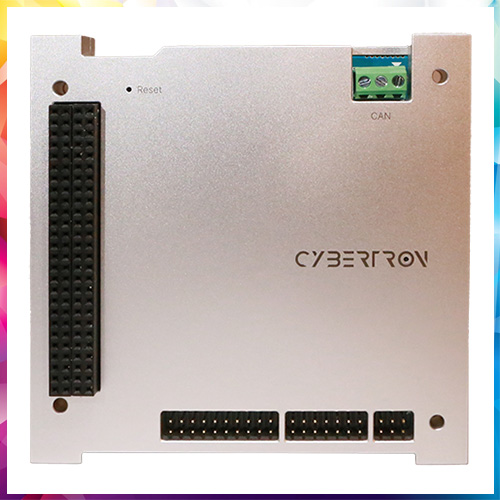Breaking News

Advanced Micro Devices (AMD) has posted record-breaking results for its data center segment, underscoring the growing global demand for high-performance AI and compute infrastructure. The chipmaker reported $4.3 billion in data center revenue for Q3 2025, marking a 22 percent year-over-year (YoY) and 34 percent quarter-over-quarter (QoQ) surge — its strongest quarterly performance to date.
The growth, AMD said in a statement, was powered primarily by strong adoption of its 5th-generation Epyc Turin CPUs and Instinct MI350 Series GPUs, both of which have seen accelerated uptake among hyperscalers and enterprise AI customers.
For the quarter ending September 27, AMD recorded total revenue of $9.3 billion, up 36 percent YoY and 20 percent QoQ, exceeding Wall Street expectations. The company reported operating income of $1.3 billion and net income of $1.2 billion, while operating expenses rose 30 percent to $3.5 billion, reflecting increased investment in R&D and go-to-market initiatives to capitalize on “significant AI opportunities.”
“We delivered an outstanding quarter, with record revenue and profitability reflecting broad-based demand for our high-performance Epyc and Ryzen processors and Instinct AI accelerators,” said Dr. Lisa Su, AMD’s chair and CEO. “Our record third-quarter performance and strong fourth-quarter guidance mark a clear step up in our growth trajectory as our expanding compute franchise and rapidly scaling data center AI business drive significant revenue and earnings growth.”
AMD’s strong quarter was bolstered by its partnerships with cloud hyperscalers and AI providers. Dr. Su said that Turin CPUs accounted for nearly half of all Epyc sales during Q3, with more than 160 new CPU-powered instances launched by global cloud service providers.
On the GPU front, AMD saw further traction with its Instinct MI350 series, including deployments from Oracle — which introduced the first publicly available MI355X instances — and newer “neocloud” players such as Crusoe, DigitalOcean, TensorWave, and Vultr.
Despite striking a deal with the Trump administration in August to ship its Instinct MI308 GPUs to China, AMD confirmed that it did not record any revenue from those sales for the second consecutive quarter due to export restrictions. Su described the regulatory environment as “pretty dynamic” but noted that AMD had secured “some licenses” and expected updates on progress in the coming months.
Looking ahead, AMD forecast Q4 2025 revenue of around $9.6 billion, plus or minus $300 million, implying roughly 25 percent YoY growth. The company expects strong double-digit gains across its data center, client, gaming, and embedded segments.
Dr. Su said AMD remains on schedule to launch its 2nm Venice processors and MI400 accelerator series in 2026, along with a new Helios rack-scale AI system, marking what she described as the company’s “next phase of AI data center growth.”
She pointed to strategic collaborations with OpenAI — involving the deployment of 6GW of Instinct GPUs — and with Cisco and G42 in the UAE for a large-scale MI350X GPU cluster as signs of growing enterprise adoption.
“The demand for compute has never been greater as every major breakthrough in business, science, and society now relies on access to more powerful, efficient, and intelligent computing,” Su said on the earnings call. “These trends are driving unprecedented growth opportunities for AMD.”
The growth, AMD said in a statement, was powered primarily by strong adoption of its 5th-generation Epyc Turin CPUs and Instinct MI350 Series GPUs, both of which have seen accelerated uptake among hyperscalers and enterprise AI customers.
For the quarter ending September 27, AMD recorded total revenue of $9.3 billion, up 36 percent YoY and 20 percent QoQ, exceeding Wall Street expectations. The company reported operating income of $1.3 billion and net income of $1.2 billion, while operating expenses rose 30 percent to $3.5 billion, reflecting increased investment in R&D and go-to-market initiatives to capitalize on “significant AI opportunities.”
“We delivered an outstanding quarter, with record revenue and profitability reflecting broad-based demand for our high-performance Epyc and Ryzen processors and Instinct AI accelerators,” said Dr. Lisa Su, AMD’s chair and CEO. “Our record third-quarter performance and strong fourth-quarter guidance mark a clear step up in our growth trajectory as our expanding compute franchise and rapidly scaling data center AI business drive significant revenue and earnings growth.”
AMD’s strong quarter was bolstered by its partnerships with cloud hyperscalers and AI providers. Dr. Su said that Turin CPUs accounted for nearly half of all Epyc sales during Q3, with more than 160 new CPU-powered instances launched by global cloud service providers.
On the GPU front, AMD saw further traction with its Instinct MI350 series, including deployments from Oracle — which introduced the first publicly available MI355X instances — and newer “neocloud” players such as Crusoe, DigitalOcean, TensorWave, and Vultr.
Despite striking a deal with the Trump administration in August to ship its Instinct MI308 GPUs to China, AMD confirmed that it did not record any revenue from those sales for the second consecutive quarter due to export restrictions. Su described the regulatory environment as “pretty dynamic” but noted that AMD had secured “some licenses” and expected updates on progress in the coming months.
Looking ahead, AMD forecast Q4 2025 revenue of around $9.6 billion, plus or minus $300 million, implying roughly 25 percent YoY growth. The company expects strong double-digit gains across its data center, client, gaming, and embedded segments.
Dr. Su said AMD remains on schedule to launch its 2nm Venice processors and MI400 accelerator series in 2026, along with a new Helios rack-scale AI system, marking what she described as the company’s “next phase of AI data center growth.”
She pointed to strategic collaborations with OpenAI — involving the deployment of 6GW of Instinct GPUs — and with Cisco and G42 in the UAE for a large-scale MI350X GPU cluster as signs of growing enterprise adoption.
“The demand for compute has never been greater as every major breakthrough in business, science, and society now relies on access to more powerful, efficient, and intelligent computing,” Su said on the earnings call. “These trends are driving unprecedented growth opportunities for AMD.”
See What’s Next in Tech With the Fast Forward Newsletter
SECURITY
SOFTWARE
Tweets From @varindiamag
Nothing to see here - yet
When they Tweet, their Tweets will show up here.



























